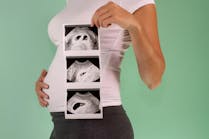T
he first focus of digital pathology was to automate the microscope. “The ultimate goal was to begin the migration from a physical slide to a digital image and ensure users' comfort during the transition,” says Jason Christiansen, PhD, senior director of Operations at HistoRx. In its earlier days, image-analysis applications were produced but limited to existing testing paradigms which had less impact than the leap to slide digitization. Fast-forward five years. Today, image quality is virtually identical to viewing a glass slide under the microscope. In fact, pathologists are willing to make diagnoses based on an image versus actual glass.
Viewing slides digitally gives numerous advantages that glass slides do not provide; for example, tumors and areas suspicious for disease can be measured more precisely; images can be manipulated and utilized for consultation and teaching purposes; images can be viewed by more than 100 people simultaneously from anywhere in the world; and automated, quantifying algorithms for estrogen receptors, progesterone receptors, and HER2 have since been developed and FDA-cleared, reports Joon Yim, MD, director of digital pathology at Acupath Laboratories. In addition, digital pathology supports rapid-assessment turnaround time for frozen sections which are critical to surgical protocols, and those slides can be digitally imaged and stored in a central repository.
The next goal of imaging proponents is to have digital pathology fully accepted as a tool in all types of pathology labs, from research to translational to clinical. Rapid exchanges and increased collaboration will allow science and diagnostic decisions to progress faster and improve information flow. As with automation development in other fields, the further integration of all aspects of the entire process will improve workflow. “This means going beyond just providing automatic methods of doing individual tasks that used to be manual; it means the introduction of new methods that were originally unavailable in manual or even in early automation models,” Christiansen says.
From a technology standpoint, scanners will continue to advance and become incrementally better. New algorithms are clearly a candidate for innovation. Methods of collaborating with specialists, peers, and residents will change as well, says Tony Melanson, VP of strategy and marketing for Omnyx. Access to case data and digital images will become more ubiquitous and multimodal. Standards for image formats and data interchanges will be adopted.
Darren Lee, VP of marketing of cellular and tissue analysis for Caliper Life Sciences, foresees analytics — based on integrated solutions consisting of sample preparation steps, staining protocols, and clinically validated image-analysis algorithms — providing prognostic power, as well as diagnostic accuracy and precision, that was previously unachieved. These will arise from better instrumentation, smarter image-analysis algorithms, better reagents, and multiplexing. In addition, fluorescence-based methods will come to the forefront for protein, RNA analysis, and DNA analysis due to improved precision, dynamic range, and novel, independent labeling methodologies (e.g., miRNA, mRNA, FISH in FFPE), optical-imaging technologies, and more advanced image-analysis algorithms, Lee continues.
One change that is not expected is biopsies being replaced by surrogate markers in blood or through imaging because the information that can be retrieved from a biopsy is, by its nature, specific to the disease and is comprehensive. “For the foreseeable future, information from surrogate tests that indicates an issue will likely be followed up by imaging and a biopsy as confirmation,” Lee says.
To advance the field, it is necessary to revisit digital-pathology foundations and examine the field as a whole. “Digital pathology is evolving to become more than just simply imaging; it also includes associated assays and analysis tools,” Christiansen says. For example, typical image analysis today is an automated version of existing scoring methods using a previously optimized assay. The assays and scoring systems were developed prior to the improved quantitative power that is provided by image analysis of digital-pathology results. Thus, new assays and methods are being developed that revisit or replace scoring methods to provide improved results and identify patient groups that were previously not resolved. “This has the potential to improve existing assays and also bring forward the next generation of assays, which may have previously been intractable because of technological limitations,” Christiansen says.
The continuing improvement in many aspects of pathology-lab automation will certainly continue with an eye to increased throughput and improved results. In the future, along with faster and higher throughput imaging, lab scientists can expect to see improved immunohistochemistry automation and, although not as visible on a bench, improved collaboration and image-analysis software. Says Christiansen, “In parallel, we hope that the further integration of all the components in the pathology laboratory will be driven by standards to allow a wider selection of products to users.”
Lee expects to see integrated turnkey sample preparation, labeling, and imaging systems, as well as new visualization software, to help pathologists interpret samples and quickly sort through vastly increased amounts of information made available by new analytics.
Digital pathology's value is more than just in creating an image. Pathology assays, when imaged digitally, can be inputs, or resources, to analysis methods which provide optimized results. These tests may not exist today because the methods have not existed previously or the resolution of the existing methods has not been sufficient to make the assays useful to the field. “Those working in this field need to look at the entire process as a whole, from the treatment of the sample through imaging to analysis,” Christiansen advises.
Karen Lynn is a medical freelance writer.





